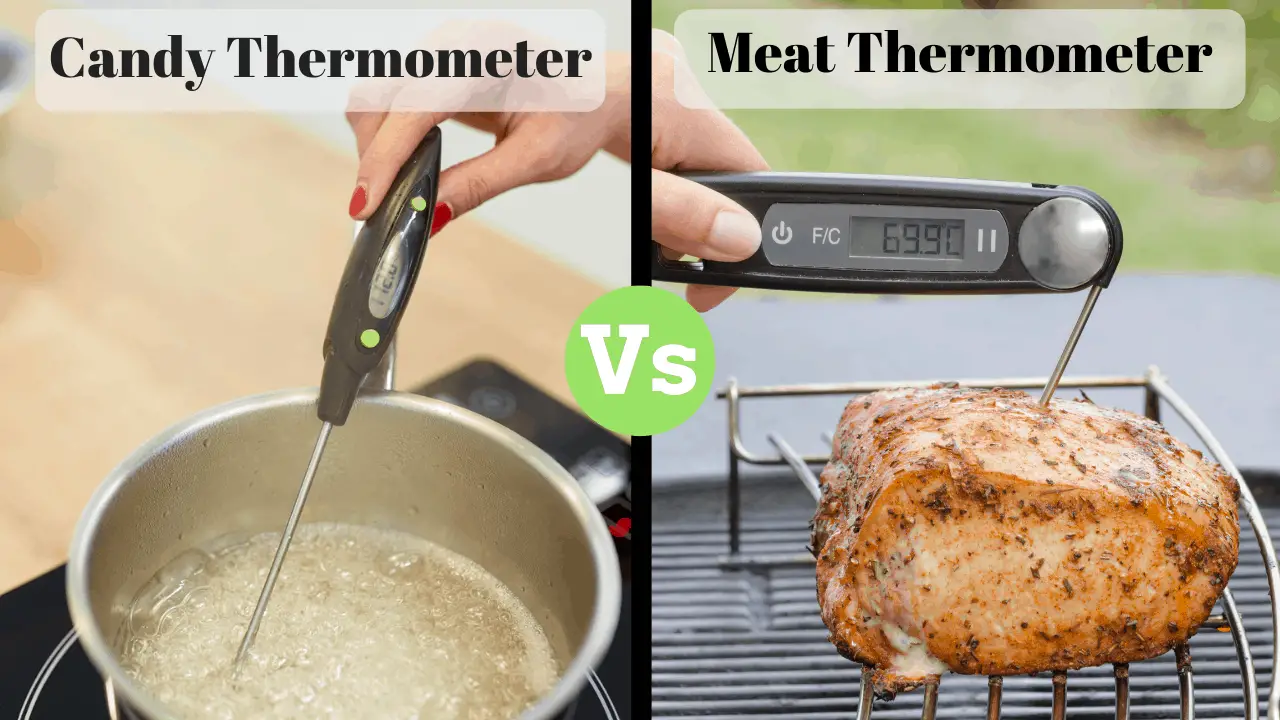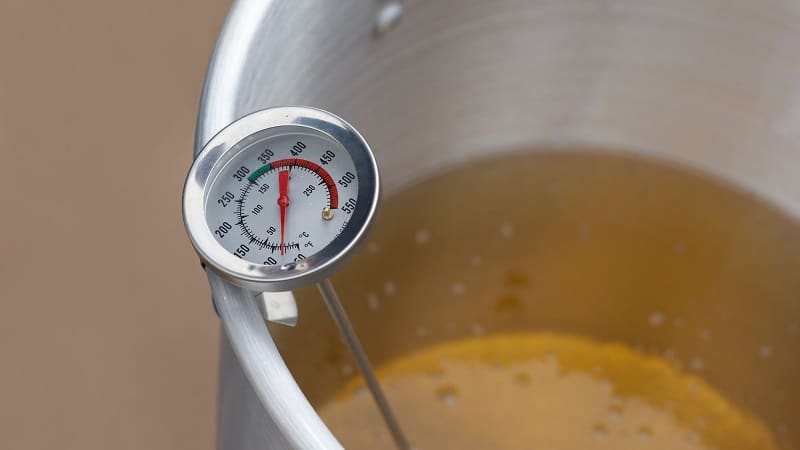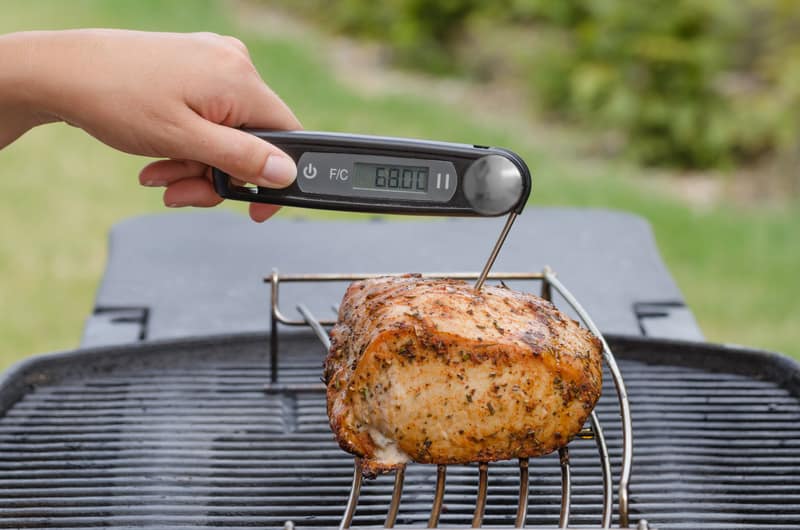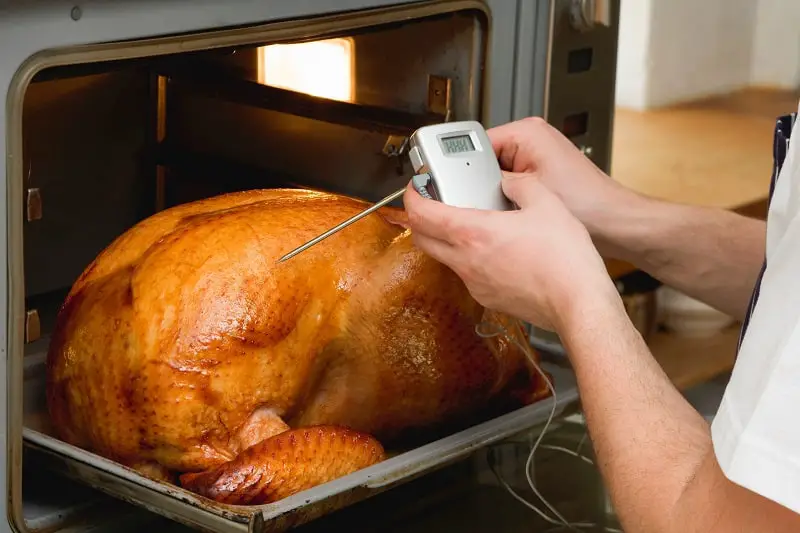The overall usage and utility of general thermometers are huge and spreads over several fields, practices, and industries. The basic principle on which the whole mechanism of a thermometer stands is the principle of acting as a device to measure the temperature and the changes in temperature. This, in turn, is converted to a numerical value for better interpretation of whether the values are presented in an analog or a digital manner.

A sugar thermometer or a candy thermometer is used to measure the sugar solution’s temperature while it is being cooked. It is used during the different stages of cooking the solution to check the progress and quality.
Similarly, a meat thermometer is used to check the internal temperature of different meats, especially steaks and roasts, among other preparations and dishes.
Here are the 6 main differences (and some similarities) between a candy thermometer and a meat thermometer:
Table of Contents
Usage
Candy thermometers are a regular item of great importance among avid candy makers. It is used to resolve the inaccuracies that occur during the cooking process due to various factors, mostly like temperature, weather, variations in ingredients like butter, chocolate, sugar, etc. The candy thermometer, with its accuracy in measuring, helps the maker greatly and helps him/her obtain a near-perfect taste.
To use the device, one must clip it to the pan’s side, making sure that the bulb doesn’t touch the bottom of the pan. Then the cooking process needs to continue by filling the pan with water and boiling it. One shouldn’t plunge the thermometer directly into the boiling water because the sudden high temperature may break it.
Meat thermometers usually take the guesswork out of cooking a meaty dish. With the help of the thermometer, one can know when the meat is properly cooked and is ready to be eaten. Whether it’s a chicken roast or a pork steak, one needs to cook it properly for it to be safe for consumption. In the case of thick chops, steaks, and roasts, one needs to insert the device into the center at the thickest part, away from the fat, bone, and gristle.
Temperature Range
The temperature for different meats measured by the meat thermometer varies. This is quite obvious given that all meats don’t taste the same; they surely will have different optimal temperatures. The process of measuring the temperature for different meats is more or less the same.
For poultry meat, it is suggested that the meat is properly cooked and ready to be consumed before the temperature hits 165 Degree Fahrenheit (74 C).
But in the case of stuffed poultry, the temperature recorded in the center of the stuffing should be about 165 Degree Fahrenheit (74 C).
For veal, lamb, or beef, the temperature can range from 145 Degree Fahrenheit (63 C) for a medium-rare to 170 Degree Fahrenheit (77 C) for a well-done dish.
The pork needs to be cooked up until about the same temperatures as lamb and beef, which is approximately about 160 Degrees Fahrenheit (71 C).
In the case of eggs and casseroles, the temperature should be about 165 Degree Fahrenheit (74 C) for eggs and a close 160 Degree Fahrenheit (71 C) for the casseroles.
The optimal temperature for most of the seafood from fish to oysters must range from 158 Degree Fahrenheit (70 C) to 165 Degree Fahrenheit (74 C).
The candy thermometer is quite similar to the meat temperature from almost all aspects. It’s just in the temperature ranges the differences lay.
A candy thermometer can usually record higher temperatures than the meat one, higher to about temperatures like 400 Degree Fahrenheit (200 C).
Accuracy of Reading
Candy thermometers and meat thermometers are generally quite accurate when it comes to measuring the temperature of sugar solution or a meat steak. But its always advised giving these food thermometers a kind of checkup monthly to keep their strain of accuracy alive.
Both the thermometers are quite similar and can be checked by using the same methods. Usually, there are two methods to verify the accuracy of the food thermometer under normal conditions (Exception being the temperature in the high altitudes).
In the first “Boiling Water” method, one has to fill a pot with water and boil it on a high flame. As the water starts to boil, one has to dip the thermometer stem two inches inside the water, making sure that it doesn’t touch the sides or the bottom. After a waiting period of 30 seconds, the reading on the thermometer should be about a 212 Degree Fahrenheit.
In the second “Ice Water” method, one has to fill finely crushed ice up to the brim in a large glass, then pour clean tap water on top of it and stir it properly. Same as before one then has to plunge the stem of the thermometer two inches into the ice water glass without touching either side or bottom. After the usual waiting period of 30 seconds, the reading on the thermometer should show 32 Degree Fahrenheit.
An error factor of 2 degrees either side is not that uncommon and should be taken into consideration.
Speed of Reading
Probe thermometers are the devices with a long and pointy metal stem that is inserted into the food, and the internal temperature during cooking, cooling, reheating, and thawing is checked accordingly. Now the food thermometers, which are of the probe built usually, take a longer time to display the reading of the measured temperatures than the more technologically advanced instant-read thermometers.
It takes the probe thermometer about 5 to 8 seconds to display the accurate reading, while on the other hand, the much faster instant-read food thermometer takes about a minimum of 2 to 3 seconds to stabilize and display the accurate reading. Both the candy and the meat thermometers and all of the thermometers are similar in this sector.
Ease of Use and Maintenance
Coming to the ease of use of the two thermometers, it’s incredibly simple and handy. Be it the candy thermometer where one just has to clip them to the pot where you are cooking the sugar solution or be it the probe thermometer with its metal stem that could easily be inserted into the meat and the internal temperature recorded.
There are some specific instructions when it comes to maintaining the thermometers and keeping them clean regularly. After each use, the meat thermometer’s probe has to be washed with hot and soapy water along with wiping the rest of the device to prevent grease from accumulating.
In the case of a candy thermometer, one just has to clip them onto a vessel of hot boiling water to thoroughly cleanse whatever sugar or caramel residue was sticking to the device.
Price Range
The price range for both candy and meat thermometers are quite reasonable and effortlessly suited for a typical domestic household. Higher models will have a higher asking price, but given the wide range of brands and the reasonable rates, one could easily land up with a device that is both essentially durable and effective for daily use.
Check out these links to get more in-depth information about the prices and availability.



